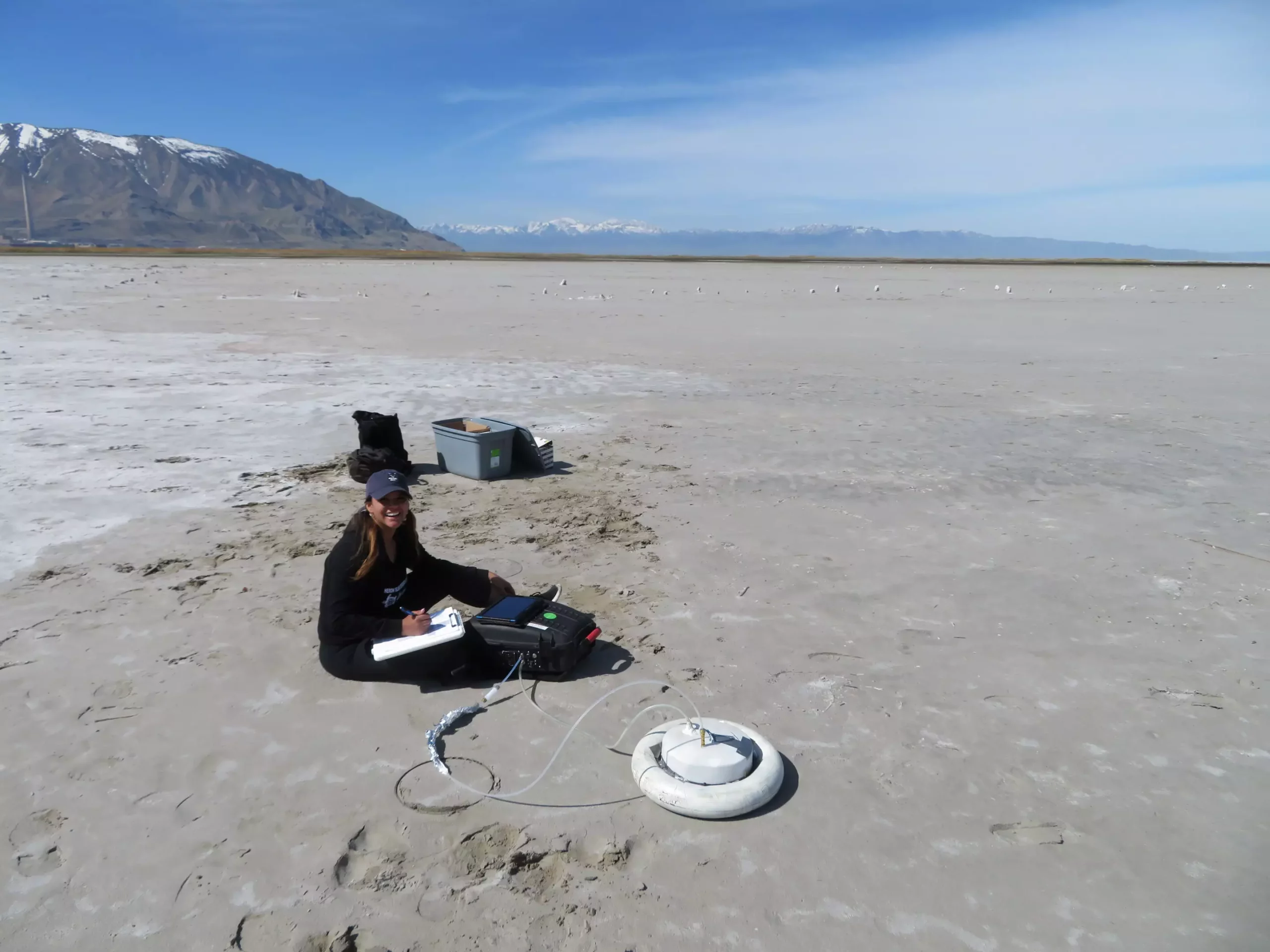Recent studies have unearthed a shocking perspective on greenhouse gas emissions, spotlighting the dried lake bed of the Great Salt Lake in Utah as a significant, yet neglected, contributor to climate change. Research spearheaded by the Royal Ontario Museum (ROM) unveiled that the desiccation of this once-vibrant saline ecosystem released an alarming 4.1 million tons of greenhouse gases in 2020 alone. This figure is not just a statistic; it is a wake-up call about the unforeseen ramifications of human interference on natural water bodies.
The findings, published in the esteemed journal One Earth, paint a bleak picture of our environmental stewardship. The lead researcher, Soren Brothers, emphasized the severity of this crisis, underscoring the urgent need to reevaluate whether we are doing enough to mitigate the impacts of lake desiccation on climate change. These emissions are not mere numbers; they represent an ongoing threat to our planet’s health, exacerbating an already precarious climate predicament.
The Overlooked Impact of Water Consumption
The drying of the Great Salt Lake is not a phenomenon driven solely by natural climatic cycles; it is primarily a consequence of human activities. Agriculture, industry, and municipal consumption are systematically draining the lake’s precious water supply. The contrast between the lake’s record-high levels in the 1980s and its catastrophic lows in 2022 illustrates the extent of human impact. This depletion does more than diminish a regional natural wonder; it redefines how we need to think about water management in an age of climate crises.
The ripple effects of such water consumption extend beyond the direct ecological impact on the lake itself. The drying of saline lakes worldwide—like the Aral Sea and Lake Urmia—demonstrates a broader crisis that intertwines biodiversity loss with deteriorating air quality and worsening human health outcomes. The exposed lake bed acts as a source of carbon dioxide and methane, two potent greenhouse gases that contribute to climate change in a feedback loop with dire consequences.
A Detailed Examination of Greenhouse Gas Emissions
The research conducted on the Great Salt Lake involved meticulous fieldwork executed over several months, where scientists measured greenhouse gas emissions every two weeks from exposed lakebed sites. The innovative use of a portable greenhouse gas analyzer within closed chambers allowed researchers to gather accurate and compelling data. The findings revealed that a staggering 94% of the emitted gases were carbon dioxide, underscoring its predominance as a greenhouse gas source from desiccated land.
Interestingly, methane, a gas that is 28 times more effective than carbon dioxide in trapping heat in the atmosphere, also contributed to these emissions. By converting this data into carbon dioxide equivalents, researchers assessed the overall warming potential of the emissions, indicating that the sheer scale of these outputs is more meaningful than mere counts of gases released.
This data reveals not only the lakebed’s present emissions but also its historical context, leading the researchers to conclude that when the lake was full, it was unlikely a significant greenhouse gas emitter. In contrast, its desiccated state has literally transformed it into a new source of atmospheric warming, unveiling a novel player in the climate change scenario.
Tackling a Feedback Loop
As the climate crisis intensifies, arid regions faces worsened drought conditions, leading to the progressive drying of rivers and lakes globally. This trend creates a dangerous feedback loop where the very sources of freshwater are contributing to climate change, which in turn exacerbates the conditions that led to their drying. The situation of the Great Salt Lake serves as a poignant example and a critical case for examining global greenhouse gas outputs and reduction strategies.
Addressing the climate impacts arising from the emissions of dried-up lakes like the Great Salt Lake must be a priority in environmental management discussions. Policymakers should consider this newly identified source in climate change mitigation frameworks, while actively striving to create regulations that protect these vital water resources from further human exploitation.
As the understanding of how we impact natural ecosystems deepens, it becomes essential to reverberate a message that emphasizes the interconnectedness of water conservation and climate health. The conversation surrounding the Great Salt Lake does not end with the research findings; it must pave the way for concrete actions that encourage sustainable water use and significant investments in climate resilience. The time to act is now, as this natural wonder teeters on the brink, redefining our collective responsibility to protect it for future generations.

